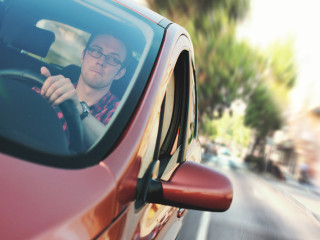By next Halloween, not only will we see Headless Horsemen roaming the streets but we may also see driverless cars alongside them!
Before a call is made to Dr. Egon Spengler and the rest of the Ghostbusters; no – they aren’t ghost cars – they are autonomous vehicles and Ontario is set to become the first jurisdiction in Canada to begin testing them on our streets.
These vehicles could be on the road as early as January 1, 2016.
Information about applying for the driverless vehicle pilot project will be available from the Ministry of Transportation in late November.
According to news reports, for now, each vehicle will need to have a real person on board with a valid driver’s licence who has the ability to override the vehicle. Self-driving vehicles on the road will also need to carry $5 million in liability insurance. These vehicles will be allowed on all public roads in the province, including the 400 series highways.
What does this mean for the practice of automobile insurance litigation and the safety of our roads?
The promise of the driverless car is that roads will be safer as collisions will be prevented by technology in the car.
Will technology be a cure-all for road accidents?
Anyone who has spent hours on the phone with their IT department can tell you that technology is not an infallible entity, so presumably the technological failures of these vehicles will occasionally lead to problems and inevitable litigation down the road.
One also needs to consider the interaction between self driving cars and other humans on the road, including other drivers, cyclists and pedestrians. Some have suggested that the Google car is almost ‘too safe’. Autonomous cars can be overly cautious and are generally set to follow the rules of the road. Humans, as we know, generally do not and so a vehicle on the road that is driving ‘by the book’ can actually pose a hazard for other vehicles around. For example, a vehicle driving at exactly 100km/hr on the 401 can pose considerable danger to other motorists when the flow of traffic is moving at a faster pace – as is often the case on 400 series highways outside of rush hour.
Until everyone on the road has an autonomous vehicle, it is very unlikely that automobile accidents will be eliminated entirely. 100% adoption of autonomous vehicles by Ontario drivers is something that is far off in the future, just given the costs of these new vehicles – not to mention those who will refuse to adopt these cars, claiming that they remove the ‘fun’ from driving.
Even in the event that automobile insurance litigation becomes of a thing of the past once everyone has self-driving cars, litigators should not fear as a new areas of practice emerge once people start taking to the skies in those flying cars that The Jetsons promised us back in the 1980s!












